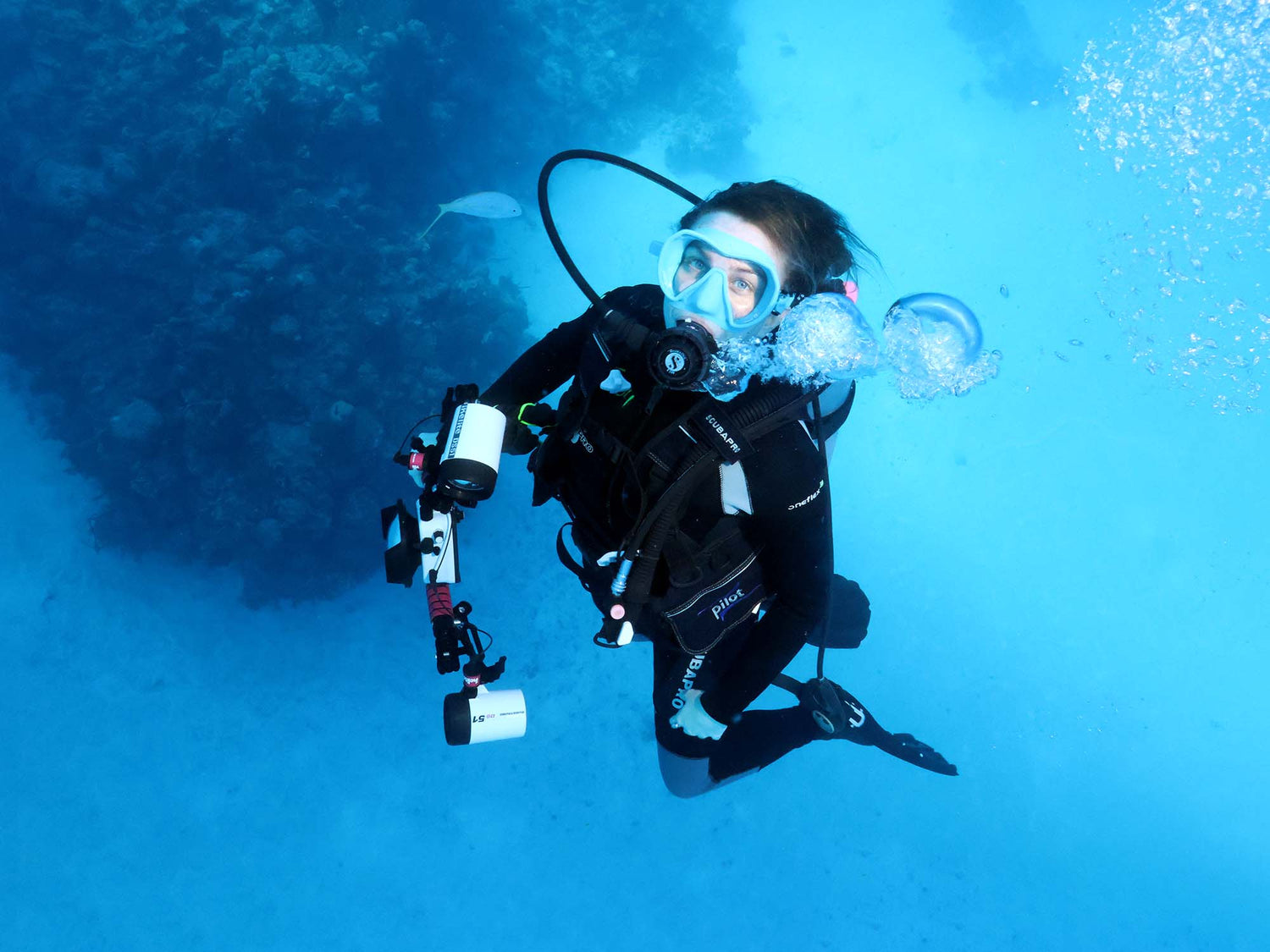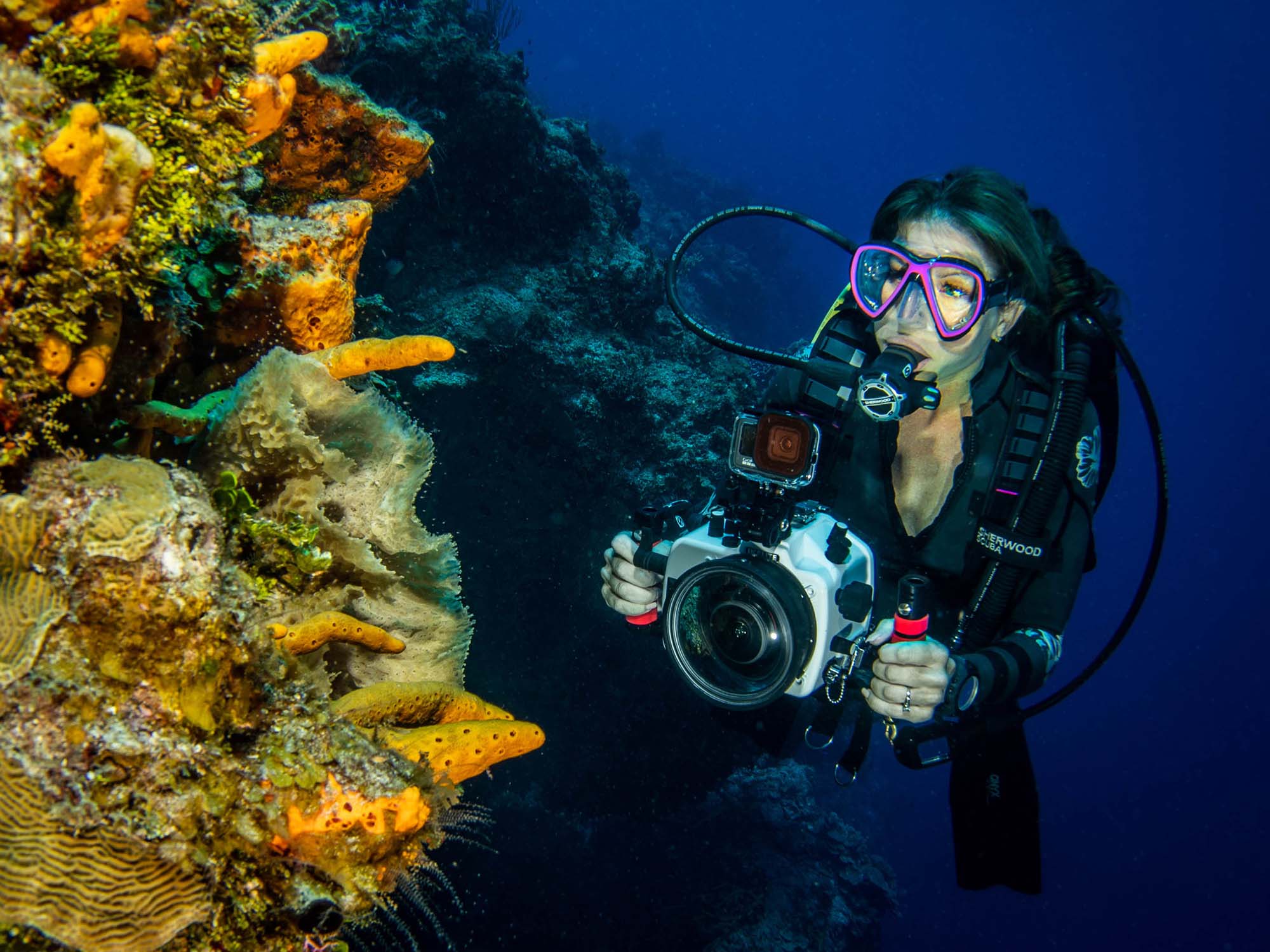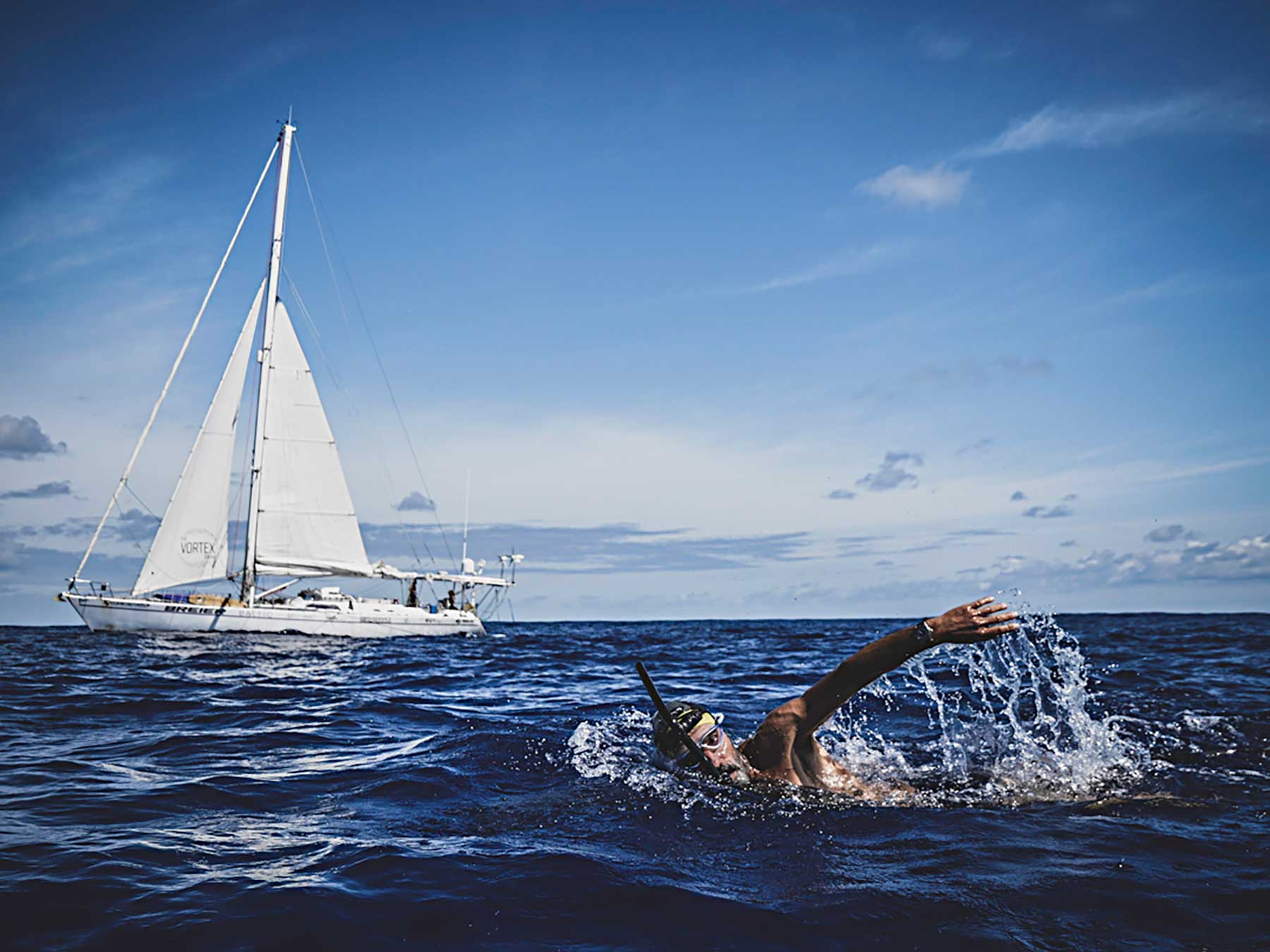By Denise Pietsch
“If you want to impress yourself and everyone else try this”
Recently the Ikelite team joined up with some of our Ambassadors and customers on board the All Star Liveaboard’s Aqua Cat for a week of diving in Eleuthera and the Exumas, Bahamas. With crystalline blue water, abundant marine life, and the convenience of liveaboard diving, this trip is the perfect recipe for underwater photography.
After the first day of diving I reviewed my underwater photos. Ecstatic over the incredible views and compositions I was seeing underwater, I was a bit disheartened that I wasn’t translating it in my photos. Why not? Thankfully, being on a liveaboard surrounded by consummate professionals, there was no shortage of guidance. Read on to find out what I learned, how it boosted my skills (and my confidence), and how the TG-6 made the whole process that much easier.

In one week I went from frustrated newbie to confident underwater photographer, and even won a small prize for this split-shot! Taken with the Olympus TG-6 inside an Ikelite Housing with dual DS51 II Strobes. © Denise Pietsch
Keep it simple
My topside approach to photography is a 35mm lens wide open trying to capture all that bokeh-goodness, but, more often than not, you’ll find me utilizing the computational photography of the iPhone for fast and easy photos. Underwater, I was struggling to translate my topside approach. I needed advice on how to navigate this learning curve.
After a long day of diving I got a chance to sit with John Brigham, share my photos, and talk about what was and wasn’t working. That’s when he gave me the piece of advice that changed everything. If I could sum it up in three words, it’s this: keep it simple.
I was focusing on trying to nail shots that require a mastery of at least three different skills and I’d not yet perfected one of them. I needed to keep it simple, I was trying to do too much. “If you want to impress yourself and everyone else, try this: start with macro on a subject that’s not moving. Once you nail that I promise you’ll see your confidence grow and you can start introducing new elements.”

This is the image that changed everything for me. When I got to the surface and reviewed this photo I saw the direct result of how powerful keeping it simple can be. From there, I used my new-found confidence, applied the advice I received, and started working on more dynamic images. © Denise Pietsch
Macro with black background
We set the TG-6 to Aperture Priority at F/18 and would use flash fall-off to our favor to create a black background and make the macro subject pop. We took some topside test images using a cup and a housing so John could demonstrate how photos will change depending on the proximity to your subject, the Aperture setting, and how the strobes are angled.
Some of this is information I knew in theory, but doing it in practice really helped it click. This is why you'll always hear the Ikelite crew suggesting to practice your underwater photography skills topside.

Practicing skills topside on the boat, and seeing the difference in each image, really helped it all click for me underwater. The better grasp you have on a setting or a subject before you get in the water means more time shooting underwater and less time trying to figure out what you're doing.
Gaining confidence
With these new insights I was excited to find out the next morning’s dive was “great for macro.” I had my eyes trained for flamingo tongues, uniquely structured coral, and/or nudibranchs, anything I could park at and practice. Perched on a lavender sea-fan were some flamingo tongues; I got to work. During the next surface interval I reviewed my images and there it was! A flamingo tongue with pops of purple from the sea-fan with a nice, dark background. I was elated! John was right, this did build my confidence.
I spent the next couple dives continuing to practice this technique on things like Christmas tree worms and brain coral until I saw a nice reef composition I liked and thought it might be a good opportunity to expand my horizons. I’d heard the term “F/8 and Be There” so first I tried F/8, and when that didn’t work I opened the lens up even more and settled on F/3.2. That was it, another shot I was really happy with and I was putting my knowledge to practice.

I am a sucker for light rays in underwater photography, so I was really happy with this shot and the cascading rays. The beauty of the Olympus TG-6 with the FCON-T02 lens is that I could go from macro subjects to wider shots like this all on the same dive, no lens or port changes required! © Denise Pietsch
Progress not perfection
I started slowly introducing new subjects that I felt I could tackle with my growing knowledge base. I got a few decent shark photos, a quite lazy (to my benefit) school of fish, reef shots, light rays, and fellow divers. They’re not perfect, but they show progression. Thankfully, on a weeklong liveaboard trip, there are plenty of days and plenty of dives to keep practicing.
Leaning into the learning curve
Keeping it simple doesn’t mean boring, it means avoiding unnecessary elaboration for the sake of clarity. In this case, clarity helped me navigate the learning curve. The good news is this is a really fun learning curve to lean into. Plus, it’s good for us! In addition to honing a craft, mastering a new skill is also beneficial to our well-being and increases neuroplasticity.
The second half of the “F/8 and Be There” quote focuses on the importance of showing up for a photographic opportunity. It’s a reminder to soak up as much knowledge as you can, adjust your settings as needed, but most importantly: appreciate the view.

The Ikelite Photo School has a ton of content - like Silhouetting Camera Settings - to set you up for success. Incorporating personal advice plus tips from the Ikelite Cheat Sheets really helped me navigate the learning curve quickly. © Denise Pietsch
Why I liked the TG-6
For the entirety of the trip I used the Olympus TG-6 inside an Ikelite Housing with the FCON-T02 lens and 6-inch Dome Port paired with DS51 II Strobes and was very satisfied. To start, the TG-6 is super low profile and lightweight making it easy to pack for travel and it doesn’t create very much drag underwater. It’s easy to handle, incredibly responsive, and user-friendly. Plus, it takes insane macro shots for a point-and-shoot which is helpful if you’re taking the same learning curve I did.
Equipped with the RC1 TTL Receiver, I could focus all my attention on practicing my camera settings and composition and didn’t need to think twice about strobe exposure. Plus, the RC1 is battery-friendly. I found the TG-6 battery would last me all day, through 4-5 dives and topside photos too.
The FCON-T02 lens and 6-inch Dome is great because I never had to take it off. There’s no swapping from wide angle to macro, the 6-inch Dome never left my housing and was great no matter the subject. This especially came in handy at the surface when I got an opportunity to try out some split-shots.
All in all, especially when you’re starting out, the less you need to think about your system the better. Having such an easy system to shoot allowed me to focus on my composition, my camera settings, and enjoying the view.

Go from Wide Angle to Macro in no time underwater with the Olympus TG-6 and FCON-T02 lens. This was a great setup for my first week-long dive trip. It allowed me to explore a variety of styles underwater without having to make any equipment changes between dives. Plus you can't beat it's portability and how travel-friendly it is. © Denise Pietsch

Denise Pietsch (pronounced “Peach”) currently manages Ikelite’s Photo School and social media presence. Denise hails from New Jersey, where she obtained a degree in Dance Therapy. After years teaching dance she migrated into the corporate world and eventually came around to Ikelite via the natural career path of fruit distribution and early childhood development. In the end, her lifelong love of photography and octopuses combined into the work she does now. In addition to sharing her energy and enthusiasm with the underwater community she also manages social media for her dog, Joe, collects vinyl records, and enjoys creating memories with her friends and family.
Additional Reading
Wide Angle Fisheye to Macro on the Same Dive with the Olympus Tough TG-6
An Insider's Guide to Liveaboard Diving
Diving Into a Deeper Meaning: Finding Inspiration in the Scuba Industry
Why You Need Strobes Underwater
Maintaining Your Macro Eye | Using Underwater Techniques on Land













